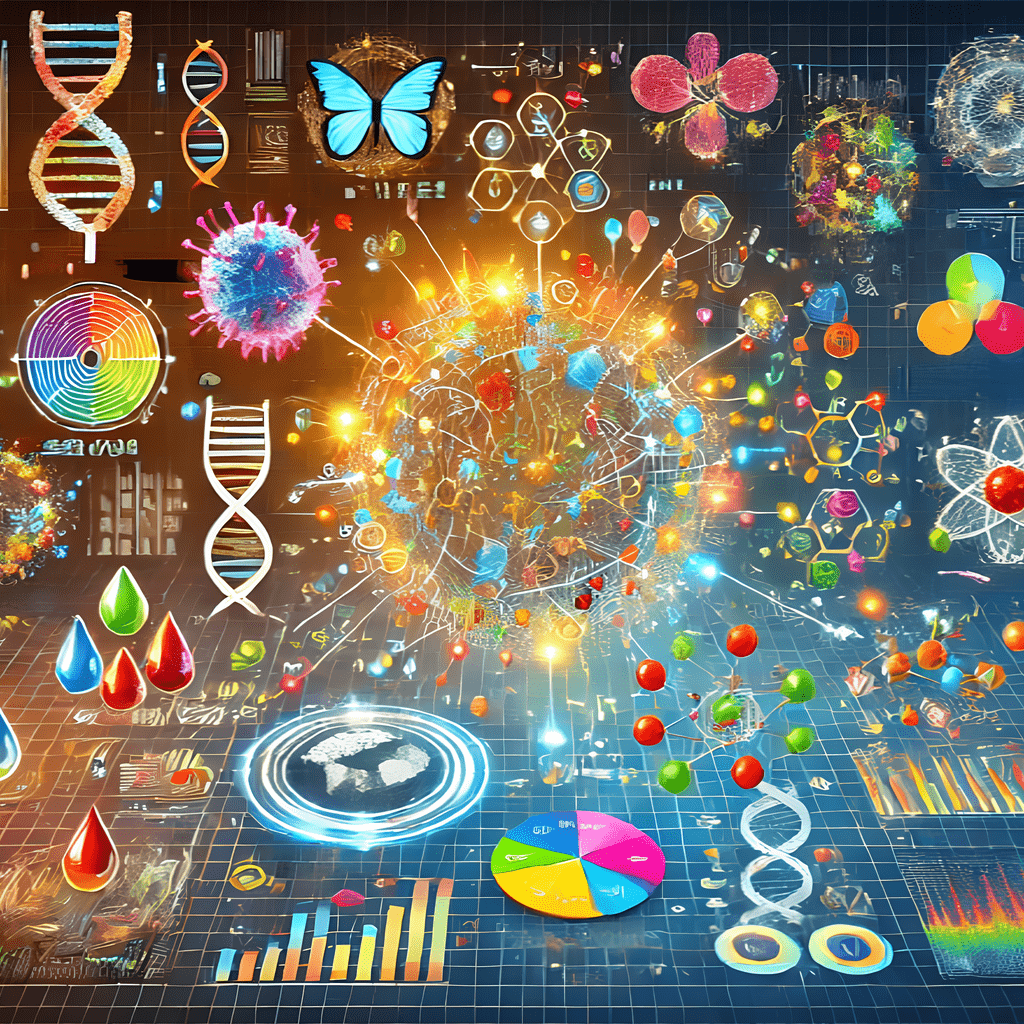In the rapidly evolving field of life sciences, the integration of omics data has become a cornerstone for understanding complex biological processes. Omics, referring to large-scale data analysis in genomics, transcriptomics, proteomics, metabolomics, and more, allowsresearchers to gain a comprehensive view of biological systems. However, to unlock the full potential of omics data, integration is essential.
In this blog post, we will explore the importance of omics data integration and how it is transforming our understanding of biology, disease, and treatment development.
What is Omics Data Integration?
Omics data refers to the study of various biological molecules that offer insights into the structure, function, and dynamics of living organisms. This includes:
Each individual omics layer provides valuable insights, but it's the integration of these layers that creates a holistic picture of biological processes. Data integration involves combining these datasets to identify correlations, causal relationships, and new biological insights that would be impossible to achieve by analyzing them in isolation.
Why is Omics Data Integration Important?
Understanding biological systems requires a multidimensional approach. Omics data integration allows for a deeper, more accurate understanding of complex processes, such as:
Biological systems are highly interconnected, and a single gene or protein cannot explain their function. Integrating omics data reveals how various molecular layers interact, offering a systems-level understanding of biology.
By combining genomic, transcriptomic, proteomic, and metabolomic data, we can identify novel biomarkers for diseases, which are essential for early diagnosis and the development of targeted treatments.
Integrating omics data enables personalized medicine approaches, where treatments are tailored based on a patient's unique genetic, proteomic, and metabolic profiles. This is crucial for improving treatment outcomes and minimizing adverse effects.
Diseases, especially complex ones like cancer or neurodegenerative disorders, involve multiple molecular pathways. Omics integration helps to uncover how different pathways interact, contributing to a more accurate understanding of disease mechanisms.
Approaches to Omics Data Integration
There are various strategies for integrating omics data, depending on the biological questions being asked:
Involves combining different types of omics data into a single dataset for comprehensive analysis. For example, merging genomics and transcriptomics data to understand how genetic variations impact gene expression.
These methods map the relationships between genes, proteins, and metabolites to create biological networks. These networks provide insights into cellular processes and help identify key regulatory molecules.
Advanced statistical techniques and machine learning algorithms are used to find patterns and correlations across multiple omics datasets. These models can help predict disease outcomes, drug responses, and more.
Visual tools like heatmaps, networks, and graphs are used to present integrated omics data in ways that make it easier to identify trends and relationships, helping researchers visualize complex biological interactions.
Applications of Omics Data Integration in Research and Healthcare
Omics integration allows researchers to understand how genetic mutations, changes in gene expression, and alterations in protein function contribute to cancer. It helps identify potential therapeutic targets and personalize cancer treatments.
Diseases like Alzheimer's and Parkinson's involve complex interactions between genetics, protein aggregation, and metabolism. Integrating omics data provides a more comprehensive understanding of these diseases, which is essential for developing effective treatments.
By integrating omics data, researchers can identify potential drug targets, predict drug efficacy, and assess off-target effects, speeding up the drug development process and reducing the risk of failure in clinical trials.
The integration of omics data allows for more accurate predictions of individual responses to treatment. Personalized treatments, informed by a person's genetic, proteomic, and metabolic data, ensure that patients receive the most effective therapies with minimal side effects.
The Challenges of Omics Data Integration
Despite its potential, integrating omics data is not without challenges:
Omics data often comes from different platforms, using different techniques and standards. Ensuring consistency across datasets is essential for reliable integration.
The sheer volume of omics data can be overwhelming. Advanced computational methods and tools are required to store, process, and analyze these large datasets.
Biological systems are inherently complex and dynamic. Even with integrated data, it can be challenging to draw definitive conclusions about biological mechanisms without further validation and experimentation.
With the rise of machine learning models in omics data analysis, there is an increasing need for methods that provide interpretable insights. This is crucial for translating bioinformatics findings into practical applications in research and healthcare.
How Zenith Analytics Can Help
At Zenith Analytics, we specialize in the integration and analysis of omics data. Our team uses state-of-the-art tools and advanced computational methods to merge various omics layers, providing you with comprehensive insights that drive your research forward. Whether you are studying disease mechanisms, developing personalized treatments, or working on drug discovery, we are here to support your efforts.
Our services include:
Combining genomics, transcriptomics, proteomics, and metabolomics data to provide a holistic understanding of biological processes.
Using machine learning and statistical models to uncover patterns and predict outcomes from complex datasets.
Offering expert guidance on how to approach your research, integrate data, and interpret results.
By integrating omics data, we can help you unlock new discoveries and pave the way for more effective, personalized healthcare.
Reach out to us today to learn how we can support your research with omics data integration and advanced bioinformatics solutions.
